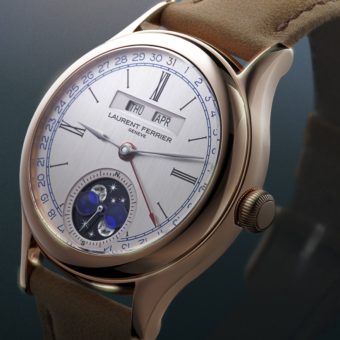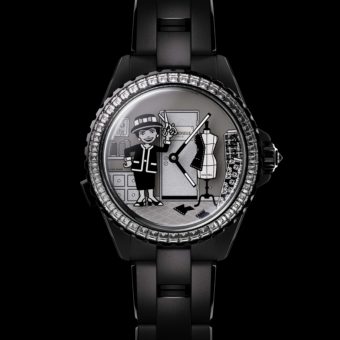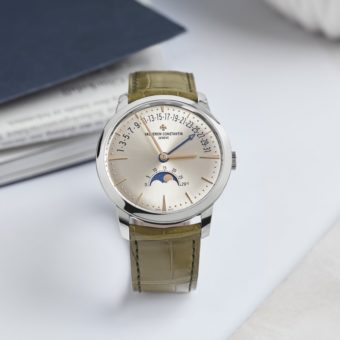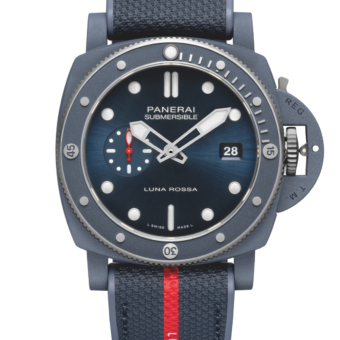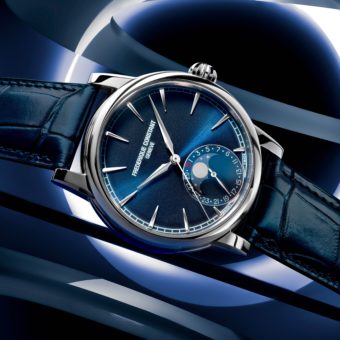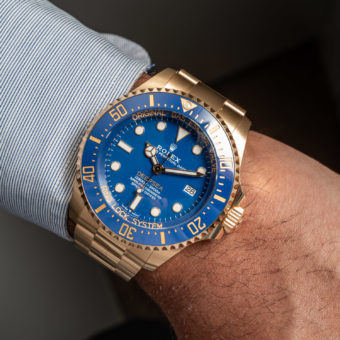The collections will each have a set of distinguishing features. “For each there is a clear code. For us this is fundamental,” Sofisti says. In the past, a particular style of hands or indexes, for instance, was used pell-mell across many collections and blurred the lines between them.
The new line-up will also incorporate a smaller number of different calibers, Sofisti says. “There was a lot of difficulty here in the manufacture because we have a huge selection of calibers. Maybe that’s not so smart when we can concentrate on a few of them and do better executions,” he says.
“If you look at a recap of the whole [revamping], it’s ‘Get simple,’ and that means make something everyone can understand and, on the production side, get something we can produce with high quality, efficiency and also a little bit of volume,” Sofisti says.

He even wants to simplify the brand’s complications. From now on, all the complicated, high-horology models, including its well-known chiming watches (G-P is among the few brands that makes its own chiming mechanisms) will be housed in round cases, rather than a mix of various shapes, as before. This will make the high-horology segment of the brand as distinctive and easy to understand as the other collections, Sofisti says.

G-P’s best-known complication, and for many watch cognoscenti the hallmark of the brand, is the Tourbillon with Three Gold Bridges, which debuted as a pocketwatch in the 1860s and has been translated into many wristwatch models.
Too many, according to Sofisti. “If you ask people to name a Girard-Perregaux, everyone says, ‘the Three Bridges,’ but they can’t recall an image of it. It was used in all kinds of cases: square, tonneau and round. Each is a beautiful piece, but at the same time we completely lost the focus,” he says. The Three Bridges is now a round watch, period.

Most future high complications were to be designed by Loiseau, the celebrated maker of such mechanical wonders as Blancpain’s 1735, launched in 1991, and Omega’s so-called “Sand” tourbillon watches of 1985 (they got their nickname from the texture of their dials). Sofisti knew Loiseau from their Omega days and called upon him to strengthen the brand’s identity as a complications specialist and to give it a reliable and exclusive source of new ideas. Loiseau also had his own company, Atelier Loiseau, known for a super-complicated watch of Loiseau’s own design called the 1f4 Grande Sonnerie, which has nearly 1,000 components. (Loiseau named it after an opening chess move invented by the 19th-century chess expert Henry Edward Bird. “Loiseau” is French for “the bird.”) It is unclear how Loiseau’s death will affect G-P’s plans.


G-P will introduce another high-horology watch this spring, one that predates Loiseau’s hook-up with the brand. It’s the first watch to contain G-P’s constant-force escapement, unveiled in 2008. G-P had some difficulty figuring out how to provide enough power to the movement, but resolved the problem and is now ready with the watch, which has a hearty seven-day power reserve. The regulator is a blade made out of silicon that accumulates energy, then releases it, as it buckles alternately on one side and then the other, delivering impulses to the balance. The point of the invention is to deliver a steady flow of power throughout the seven days so that the watch will not become less precise as it runs out of energy.
The escapement will be used in just a few pieces at first, in Vintage 1945 and 1966 cases, but eventually will be used in a wider range of models. “It will be part of the regular collection,” Sofisti says.
Sofisti’s overhaul of JeanRichard was as drastic as that of Girard-Perregaux. Since it was launched in the 1990s, the brand has had different incarnations and even different names: “Daniel JeanRichard” and “Jean Richard” were both precursors to the current “JeanRichard.” The collection was a mishmash of various designs. In short, it was plagued by the same fuzzy image that hobbled G-P, Sofisti says. “JeanRichard had a tourbillon, a square, round models, rectangles, everything,” Sofisti says. “This has diluted the message.”
He decided to treat JeanRichard as an entirely new brand. “We’re starting from scratch, with a new positioning,” he says. To oversee JeanRichard’s operations, he hired Bruno Grande, an industry veteran with whom Sofisti had worked at the Swatch Group. The brand now consists of four distinct families, Aquascope, Terrascope, Aeroscope and 1681. All have outdoorsy, sporty themes and cushion-shaped cases. (The 1681 also has some round models. Its name refers to the year that Daniel Jean-Richard, considered to be the father of watchmaking in the Swiss Jura Mountains, made his first watch.) “Each has its own character, its own hands, indexes, and whatever else we can use to define it,” Sofisti says.

The brand had another problem: its prices were way too high. “They started at about 6,000 Swiss francs,” he says. “This gave the brand no real possibility of development in terms of distribution.”
The new JeanRichard starts at $2,900. The less expensive models contain ETA movements; the top-of-the-line ones are powered by in-house movements based on the JR 1000 movement that was introduced in 2004. As with G-P, the watch cases are designed so that different materials can be juxtaposed. Allgold models with in-house movements will go as high as $21,400.

Terrascope collection
Sofisti believes that his makeover of JeanRichard gives the brand an identity it didn’t have before, and the company will trumpet that new theme. “It’s important to tell people very loudly what JeanRichard is, because nobody knows it. We need to focus on something, so here is a statement.”

new 1681 collection
To help get word out about the new JeanRichard and the new G-P, Sofisti will be taking advantage of their new parent’s deep pockets. PPR is a $12.6-billion conglomerate with interests in retailing and, increasingly, in luxury brands. It entered the luxury business in 1999 by buying a stake in Gucci (it acquired the company in its entirety in 2004) and since then has built a stable of luxury names that includes Yves Saint Laurent, Alexander McQueen, Boucheron, Stella McCartney, Bottega Veneta and others. It is the third-largest luxury-goods company in the world, after LVMH and the Richemont Group.
Thanks to PPR, Sowind has money not just for developing new products but for promoting them. Sofisti has embarked on several new marketing and public relations campaigns, including one called The New Faces of Tradition. In it, a group of young G-P watchmakers, accompanied by Loiseau, tours the world demonstrating their skills and being photographed at the bench in unlikely but celebrated locations: in Grand Central Terminal in New York, at the Forbidden City in Beijing, in front of the Eiffel Tower in Paris, and so forth.
PPR acquired control of Sowind in two stages. In 2008, when Gino Macaluso needed financial support for the company, PPR bought a 23-percent share. Then, in 2011, after Macaluso’s death, PPR increased its stake to 50.1 percent. The remaining shares stayed in the hands of the Macaluso family, which still has a minority interest in Sowind. Gino Macaluso’s sons, Stefano and Massimo, and his wife, Monica, are all involved in the company.
PPR’s stake in watches is relatively small: five percent of its total revenue comes from them. Most of these are Gucci watches. (PPR sold its Bedat watch brand, which was under the Gucci umbrella, in 2009.)
As the sole luxury watch brands in PPR, G-P and Jean-Richard don’t benefit from synergies with other brands, Sofisti admits, but they benefit mightily in other ways. “For Sowind to be part of the group gives security to our suppliers because they know we have very solid shoulders. At the same time, distributors and retailers know we will be there for a long time.”
In buying Sowind, Sofisti says, PPR CEO François-Henri Pinault was not looking for a big brand, but a brand with big potential. “Mr. Pinault wants to make brands grow,” Sofisti says. Will those brands one day include other luxury watch
brands? Some observers think so.

